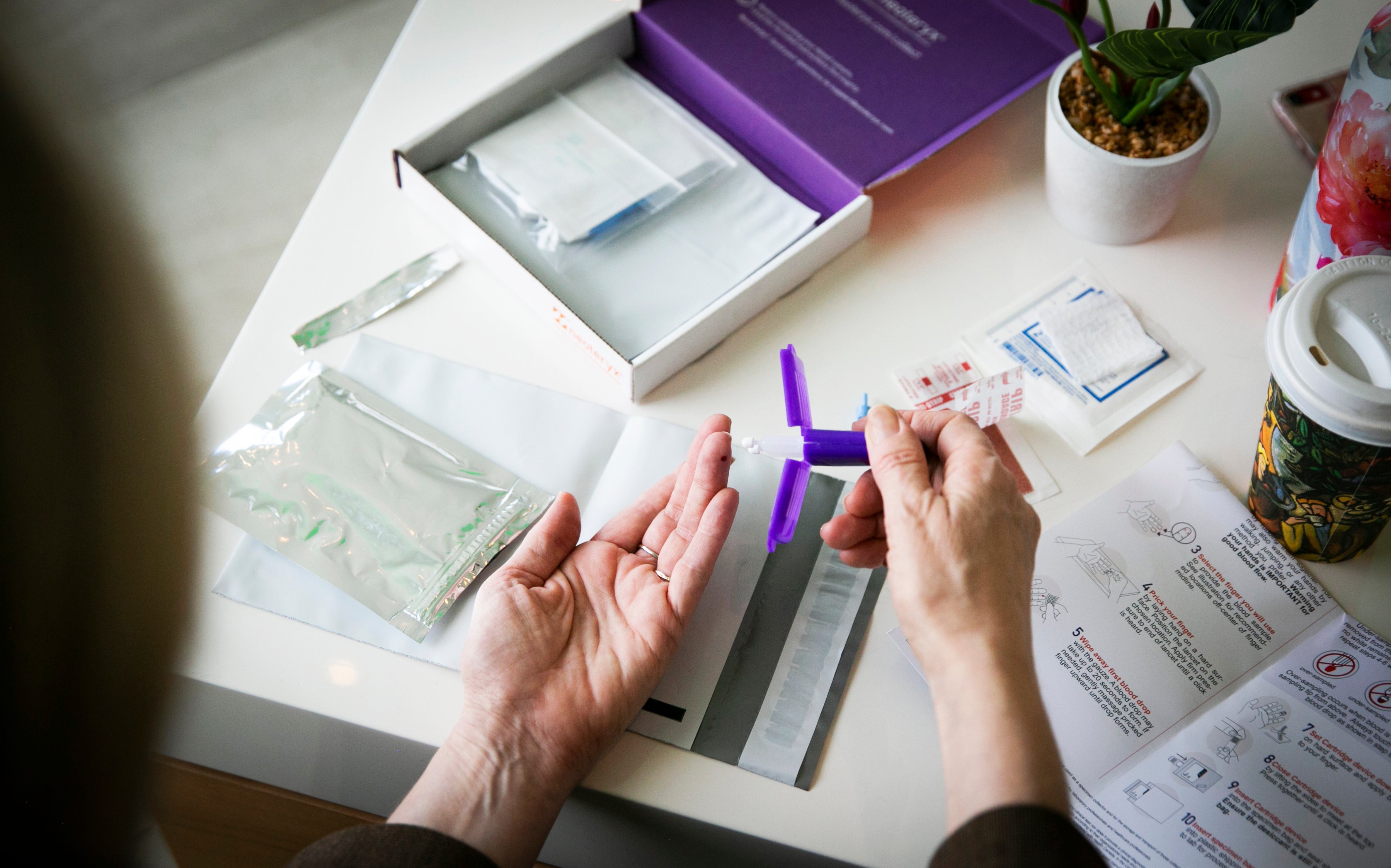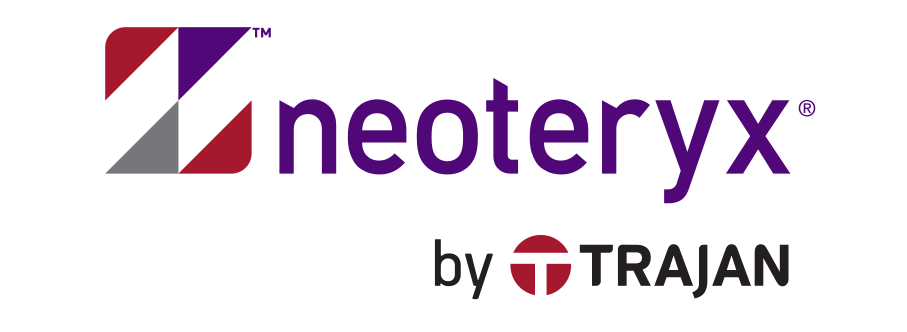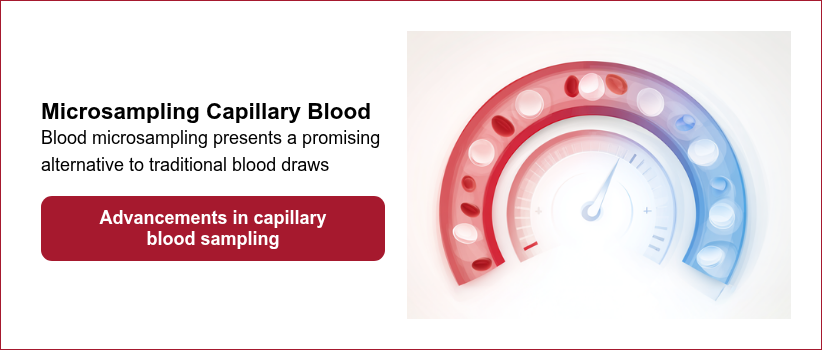Share this
overcoming hematocrit accuracy issues: VAMS vs. DBS
by Neoteryx Microsampling on Mar 6, 2018 1:32:52 PM
strategies for overcoming hematocrit accuracy issues in dried blood sampling
4:30

Overcoming the hematocrit (HCT) effect has long challenged the adoption of dried blood spot (DBS) sampling. Hematocrit bias, from varying red blood cell proportions in whole blood, causes major inaccuracy in quantitative DBS analyses.
This problem has spurred the search for precise microsampling, vital for tasks needing strict quantitation, like therapeutic drug monitoring and biomarker assessment.
Can DBS or microfluidic blood sampling overcome hematocrit bias and deliver results as reliable as those from conventional venous sampling?
Volumetric Microsampling and Microfluidic-Based Solutions to Hematocrit Bias
Volumetric absorptive microsampling (VAMS) improves on traditional DBS by collecting a fixed, accurate blood volume, regardless of hematocrit or viscosity.
This quantitative dried blood method reduces inaccuracies and allows robust, reproducible analyses. Volumetric microsampling can also lower costs for handling and shipping because samples remain viable at room temperature.
Mitra® devices with patented VAMS® technology make it possible to draw fixed volume blood samples of 10, 20, and 30 µL (microliters) from a single finger prick.
This method is less invasive than venipuncture methods that draw blood volumes approximately one thousand times greater.

Hematocrit Accuracy Issues in Dried Blood Spot (DBS) Microsampling
blood supply does not support conventional venipuncture. With DBS, a drop of blood drawn from the infant’s finger or heel is placed on a specially treated filter paper (Guthrie or Whatman) or card for analysis.
Similarly, a Mitra® device with its absorptive VAMS® tip enables a quick blood draw with a finger-stick using a small lancet. The resulting microsamples will be processed as DBS samples, requiring no refrigeration for storage or transport.
Lab analyses show a key problem with standard DBS: hematocrit-dependent inaccuracy. Quantitative analyte measurements can be misleading due to the uneven distribution of red blood cells and plasma in the dried matrix. This unevenness affects both sample consistency and analyte recovery.
In traditional DBS, blood is placed on a filter card to spread. Viscosity, influenced by hematocrit, affects how the blood spreads. Higher hematocrit increases viscosity and limits spreading. Lower hematocrit reduces viscosity, causing it to spread more.
This makes analyte levels from unit areas inconsistent between samples and complicates accuracy and reproducibility.
Hematocrit levels in a sample may vary based on hydration. More hydrated, lower-viscosity samples spread farther on dried blood paper and can yield lower hematocrit when the area is punched from the DBS card. Smaller, more viscous samples show higher hematocrit. These variations can cause inconsistent analytical data.
Several strategies have been developed to mitigate hematocrit-associated inaccuracy in DBS analyses. Modifications such as perforated or precut card designs, as well as patterned DBS (pDBS) with wax barriers, restrict blood spreading and help define a fixed sampling area.
These microfluidic-based modifications improve volume accuracy and reduce hematocrit bias, enabling more reliable quantitative dried blood analyses.
But the best innovation was yet to come.
Strategic Advantages of VAMS over DBS
Volumetric absorptive microsampling (VAMS) is a viable alternative to DBS for overcoming hematocrit bias. Devices like Mitra with VAMS use microfluidic tips to collect a precise, fixed blood volume, regardless of viscosity or hematocrit.
Each sample is consistent and reproducible, removing a major source of DBS error. Studies confirm VAMS provides greater accuracy and precision in quantifying analytes, especially when hematocrit varies.
Also, dried blood microsamples do not require refrigeration or special handling. The Mitra device is designed for easy sampling by anyone, anywhere. For many research studies, participants have successfully self-collected their samples at home or in other remote locations.
In the laboratory, sophisticated equipment and techniques can analyze microsamples as accurately as liquid blood samples or larger specimen samples.
If you haven't yet explored the advantages of volumetric microsampling technology, discover the possibilities.

Share this
- Microsampling (206)
- Research, Remote Research (119)
- Venipuncture Alternative (105)
- Clinical Trials, Clinical Research (83)
- Mitra® Device (73)
- Therapeutic Drug Monitoring, TDM (51)
- Dried Blood Spot, DBS (39)
- Biomonitoring, Health, Wellness (30)
- Infectious Disease, Vaccines, COVID-19 (24)
- Blood Microsampling, Serology (23)
- Omics, Multi-Omics (21)
- Decentralized Clinical Trial (DCT) (20)
- Specimen Collection (18)
- Toxicology, Doping, Drug/Alcohol Monitoring, PEth (17)
- Skin Microsampling, Microbiopsy (14)
- hemaPEN® Device (13)
- Preclinical Research, Animal Studies (12)
- Pharmaceuticals, Drug Development (9)
- Harpera Device (7)
- Industry News, Microsampling News (5)
- Antibodies, MAbs (3)
- Company Press Release, Product Press Release (3)
- Environmental Toxins, Exposures (1)
- July 2025 (1)
- May 2025 (1)
- April 2025 (2)
- December 2024 (2)
- November 2024 (1)
- October 2024 (3)
- September 2024 (1)
- June 2024 (1)
- May 2024 (1)
- April 2024 (4)
- March 2024 (1)
- February 2024 (2)
- January 2024 (4)
- December 2023 (3)
- November 2023 (3)
- October 2023 (3)
- September 2023 (3)
- July 2023 (3)
- June 2023 (2)
- April 2023 (2)
- March 2023 (2)
- February 2023 (2)
- January 2023 (3)
- December 2022 (2)
- November 2022 (3)
- October 2022 (4)
- September 2022 (3)
- August 2022 (5)
- July 2022 (2)
- June 2022 (2)
- May 2022 (4)
- April 2022 (3)
- March 2022 (3)
- February 2022 (4)
- January 2022 (5)
- December 2021 (3)
- November 2021 (5)
- October 2021 (3)
- September 2021 (3)
- August 2021 (4)
- July 2021 (4)
- June 2021 (4)
- May 2021 (4)
- April 2021 (3)
- March 2021 (5)
- February 2021 (4)
- January 2021 (4)
- December 2020 (3)
- November 2020 (5)
- October 2020 (4)
- September 2020 (3)
- August 2020 (3)
- July 2020 (6)
- June 2020 (4)
- May 2020 (4)
- April 2020 (3)
- March 2020 (6)
- February 2020 (3)
- January 2020 (4)
- December 2019 (5)
- November 2019 (4)
- October 2019 (2)
- September 2019 (4)
- August 2019 (4)
- July 2019 (3)
- June 2019 (7)
- May 2019 (6)
- April 2019 (5)
- March 2019 (6)
- February 2019 (5)
- January 2019 (8)
- December 2018 (3)
- November 2018 (4)
- October 2018 (7)
- September 2018 (6)
- August 2018 (5)
- July 2018 (8)
- June 2018 (6)
- May 2018 (5)
- April 2018 (6)
- March 2018 (4)
- February 2018 (6)
- January 2018 (4)
- December 2017 (2)
- November 2017 (3)
- October 2017 (2)
- September 2017 (4)
- August 2017 (2)
- July 2017 (4)
- June 2017 (5)
- May 2017 (6)
- April 2017 (6)
- March 2017 (5)
- February 2017 (4)
- January 2017 (1)
- July 2016 (3)
- May 2016 (1)
- April 2016 (2)



Comments (2)